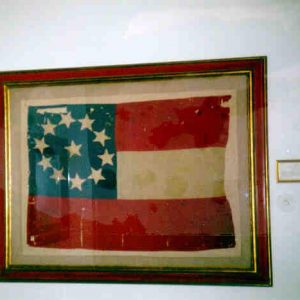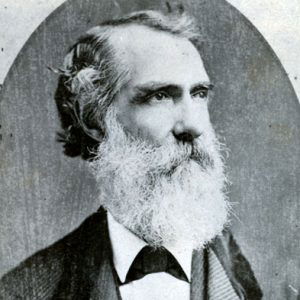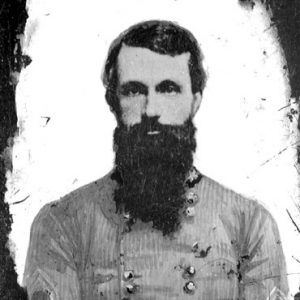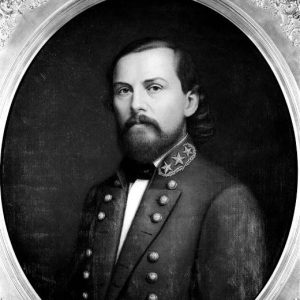calsfoundation@cals.org
Second Arkansas Infantry (CS)
The Second Arkansas Infantry was a Confederate regiment that saw service in the Western Theater during the Civil War. It is not to be confused with the Second Arkansas Infantry Battalion, which fought in the Eastern Theater.
The Second Arkansas was formed in the summer of 1861. Former congressman Thomas Hindman of Helena (Phillips County) obtained permission from Confederate secretary of war LeRoy Walker to recruit an infantry regiment. The state was responsible for providing the arms for the unit. Ten companies were raised by June 1, with six at Helena and four at Pine Bluff (Jefferson County). The companies were from Phillips, Jefferson, Bradley, and Saline counties. Support from state authorities never materialized, and Hindman personally provided the funds necessary to feed and clothe the troops. The regiment was organized as the Second Arkansas in June 1861, with Hindman serving as the first colonel. Initially ordered to Virginia, the unit was ordered on June 11 to move to Clark’s Bluff in Randolph County in order to defend northern Arkansas from an invasion launched from Missouri. Additional companies were organized, including several of cavalry and a battery of artillery from Mississippi. The entire unit became known as the Hindman Legion for a time before being broken up, and the Second Arkansas continued to serve as a single unit. Hindman was promoted to brigadier general on September 28, 1861. Lieutenant Colonel J. W. Bocage took command of the regiment for a short time before being replaced by Lieutenant Colonel Daniel C. Govan.
The regiment then moved to Memphis, Tennessee, in the fall of 1861, followed by a move into Kentucky, where it saw its first action at the Battle of Rowlett’s Station on December 17. Serving in a brigade commanded by Hindman, the regiment was part of the Army of Central Kentucky. After Forts Henry and Donelson fell to Union forces in February 1862, the army retreated to Mississippi, where it merged with the Army of Mississippi.
The Second Arkansas fought at the Battle of Shiloh in April 1862 in a brigade with the Sixth and Seventh Arkansas Infantry regiments, the Third Confederate Infantry Regiment, and a battery of Mississippi artillery. Govan left the field on the first day due to exhaustion, and Major R. T. Harvey commanded the unit for the remainder of the battle. During an army-wide reorganization in May 1862, two companies of the regiment were disbanded due to heavy losses, and the surviving members were distributed among the other companies. One new company was raised in Marianna (Lee County), and another company was formed from members of the Eleventh Arkansas who avoided being captured at the Battle of Island Number 10. The regiment served in a brigade with the Fifth, Sixth, Seventh, and Eighth Arkansas Infantry regiments under the command of Brigadier General St. John Liddell.
Participating in the Kentucky Campaign, the regiment fought at the Battle of Perryville on October 8, 1862. The unit saw action at the Battle of Stones River that winter, losing fifteen killed, ninety-four wounded, and nine missing. Liddell claimed that the Second Arkansas killed Union brigadier general Joshua Sill, for whom Fort Sill was named.
The regiment fought at the Battle of Liberty Gap, where on June 25, 1863, its colors were captured by the Thirty-Eighth Illinois Infantry. The Second Arkansas lost fourteen killed, thirty-five wounded, and ten missing in the battle. Due to losses, the Second and Fifteenth Arkansas (Josey’s) were consolidated and fought as one unit at the Battle of Chickamauga in September. Govan led the brigade during the battle as Liddell commanded the division. In December, the Twenty-Fourth Arkansas joined the consolidated unit.
The combined unit saw more action during the Chattanooga Campaign. The Fifteenth Arkansas consolidated with the First Arkansas and the Twenty-Fourth, and the Second continued to serve as one unit during the Atlanta Campaign. At the Battle of Atlanta on July 22, 1864, the regiment lost thirteen killed, eighty-two wounded, and twenty-five missing. After the battle, the regiment had a total of sixty-seven men present for duty. At the Battle of Jonesboro, most of the brigade was captured; they were exchanged a few days later.
Fighting in the autumn and winter of 1864 at Franklin and Nashville in Tennessee, the Second was consolidated with the First, Fifth, Thirteenth, Fifteenth, and Twenty-Fourth Arkansas due to heavy losses. The regiment’s final campaign was in North Carolina, where the unit fought at Bentonville in March 1865. The next month, a final consolidation added the Sixth, Seventh, Eighth, and Nineteenth Arkansas Infantry regiments to the unit, along with the Third Confederate. The unit surrendered on April 26 at Greensboro, North Carolina.
For additional information:
Daniel C. Govan Papers. Southern Historical Collection. Wilson Library. University of North Carolina at Chapel Hill, Chapel Hill, North Carolina.
Neal, Diane, and Thomas W. Kremm. Lion of the South: General Thomas C. Hindman. Macon, GA: Mercer University Press, 1993.
Sutherland, Daniel E. “No Better Officer in the Confederacy: The Wartime Career of Daniel C. Govan.” Arkansas Historical Quarterly 54 (Autumn 1995): 269–303.
David Sesser
Henderson State University











Comments
No comments on this entry yet.